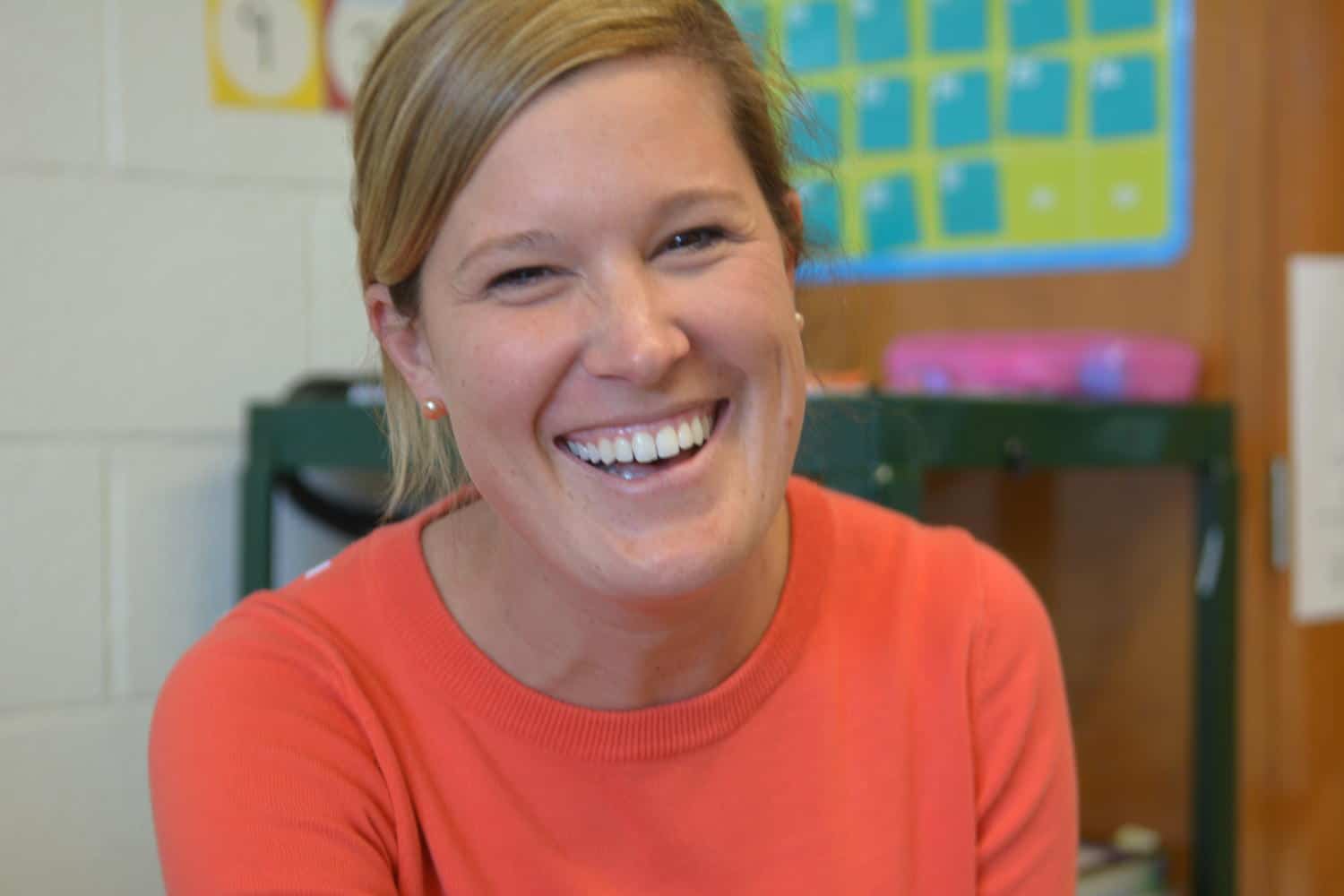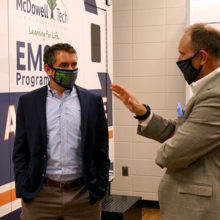Incoming Teach for America (TFA) Corps members, local educators, students, pastors, and community members recently gathered in Kinston to discuss what could be done to bring rural and urban North Carolina together. Their charge was to generate positive solutions to our most pressing challenges, and education was the most frequent topic. The evening was designed for students and educators to be on a level playing field. Each were tasked with answering the questions presented to the group.
TFA-Eastern North Carolina Interim Executive Director Andrew Lakis was the first speaker for the event. He opened the evening by declaring:
“What (attorney and activist) Brian Stevenson said so brilliantly is that, ‘The opposite of poverty is not wealth. The opposite of poverty is justice.’ When I think about that, and when I think about what it means for us to actually live in a world where every single child in Eastern North Carolina gets the education they deserve so that they can become the leaders they are destined to be, so that we can actually grow something together here that makes us proud to be North Carolinians, and builds our communities.”
Lakis’ statement was made in front of more than a dozen children from Eastern North Carolina who wrestled with the questions that Lakis proposed.
One young student looked around his table and summed up much of what the students were offering when he said:


The adults at his table laughed, but the student was striking at the core of what schools who address trauma and poverty within our students successfully understand — children must feel supported in order to feel welcomed and safe. In many ways, this means that they need to be heard.
The schools, teachers, and programs that I have seen across North Carolina who best address trauma and Adverse Childhood Experiences do so with the student in mind — and they also happen to follow the recommendation of the young man who shared his advice that evening.
My mind immediately went to Liz Blue in Fayetteville at Walker-Spivey Elementary School; she uses her lunch period every day to have a one-on-one conversation with her students. Blue told us that she understood pretty quickly that her students needed to be heard and that one way to make sure that they paid attention during class was to give them each one-on-one time.


Blue, and other teachers I have met across the state, have intuited what a recent research project from Stanford shared. The study took a look at suspension rates and declared: “Growing suspension rates predict major negative life outcomes, including adult incarceration and unemployment.”
The Stanford research focused on a one-time intervention designed to help teachers and students empathize with each other. The intervention halved the numbers of suspensions at five diverse California middle schools, and they also helped students who had previously been suspended feel more connected.
The study illustrated that changing the mindset of a teacher can change the social experience for a student. The “empathy intervention” showed particular promise for minority students and those who had faced discipline issues in the past.
Sarah Sparks from EdWeek summed up the findings by writing: “In schools working to reduce suspension rates, teachers could take a cue from Aretha Franklin: “Considering how young people view respect can greatly improve classroom management, new studies show.”
The findings of the research track with what the Public School Forum Study Group XVI will showcase when they release their upcoming report.
The Study Group’s Trauma and Learning Committee heard from Buncombe County Student Services Director David Thompson who taught us the “real question about behavior is ‘What happened to the student?’ as opposed to ‘What is wrong with the student?’”
In an effort to promote the lessons from Buncombe County and other successful programs, the report will call for “on-ramps” for educators to increase awareness of the Adverse Childhood Experiences (ACEs), their impact on learning, and appropriate interventions.
Eastern North Carolina presents a great study in contrasts for those who love our state. They have some of our state’s most fertile land and our highest rates of obesity.
Eastern NC provides some of our most beautiful places to visit, alongside some of our most persistently poor counties.
And while it is true that trauma and ACEs cut across race, gender, and class, it is also true that ACEs are more prevalent in impoverished communities, which made the conversation in Kinston an essential one for all assembled.
Both the combined research, and the conversation a few weeks ago, indicate why we must create those “on-ramps” and why it is important to bring the knowledge of ACEs, the impact of trauma on all children, and successful strategies into the classroom. It is vital for each child in our state, because it is the culture and the environment of every school that will help determine the long-term success of North Carolina.


Educator Heather Scriven also shared with the group an observation from one of the students she spoke with who said that they felt as if there were important lessons from history that they were not learning.
Scriven offered to the group:
“We came up with one thing the students can do and one thing the teachers can do. On behalf of the students, (the students) can do their own research and not be afraid to challenge what’s being taught by their teachers, and just having that information so they’re able to ask the right questions to their teachers.
“And then for the teachers, to maintain an open mind and to not take things personally when you’re questioned by students, but to do your own research, too, so you’re able to have those answers for when those students ask those difficult questions.”
A common thread from the conversation is that school cultures should embrace the theme of mutual respect. Mutual respect requires us to accept each other where we are, even when we are caught in situations that have inherent power dynamics such as the teacher and student relationship.
This thread has been illustrated by the Stanford study, but also by successful districts and schools across North Carolina and the country.
Union County, and others, are embracing concepts such as the Classrooms of Tomorrow, which envision flipping classrooms by moving towards collaborative spaces instead of the traditional model of a teacher in the front of the room with rows of desks in front of them.
Old Town Elementary in Winston-Salem plays music in the hallways between class while creating reward systems that last throughout the year and celebrate milestones — and generally treats each day as special. Principal Rusty Hall told us that one member of his team asked why they were only doing such things during testing, and they quickly adapted to make them a daily part life at Old Town.
These are districts and schools that are not without challenges, and building a culture of safe and supported schools is not a silver bullet, but each program has shown early signs of promise.
Perhaps we could all learn from the students in Kinston. After all, what might happen if we listened to all of our children, accepted their challenges based off of common thread of mutual respect, and taught them that each of us are welcome at the table in the state that we call home?



